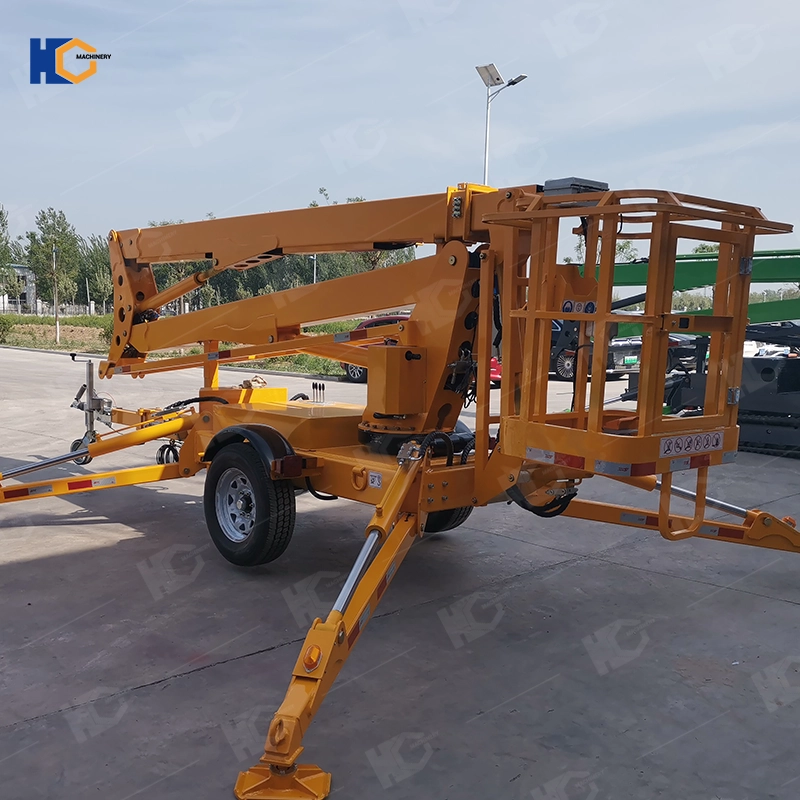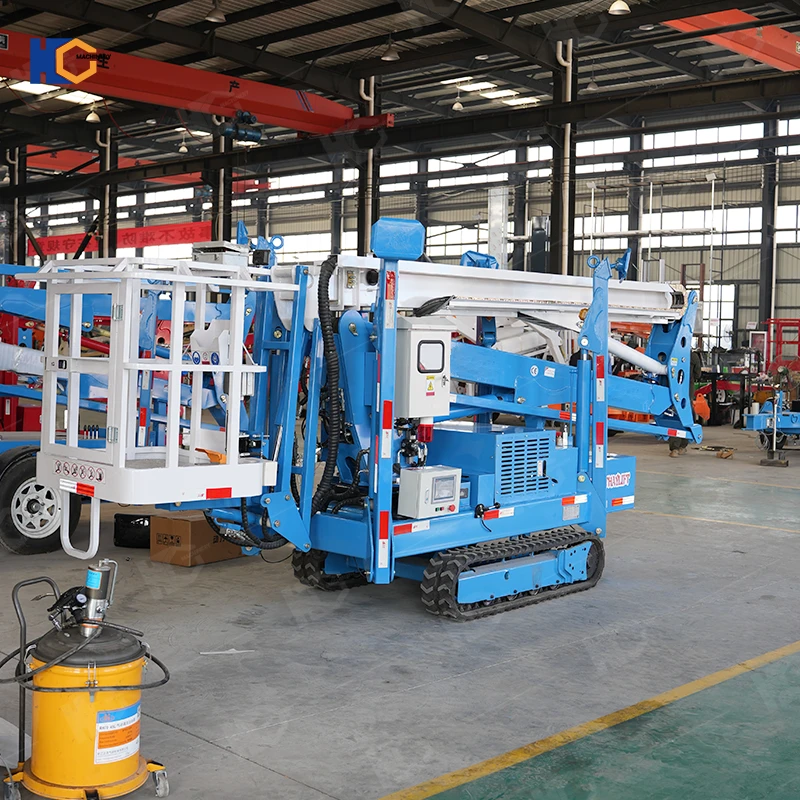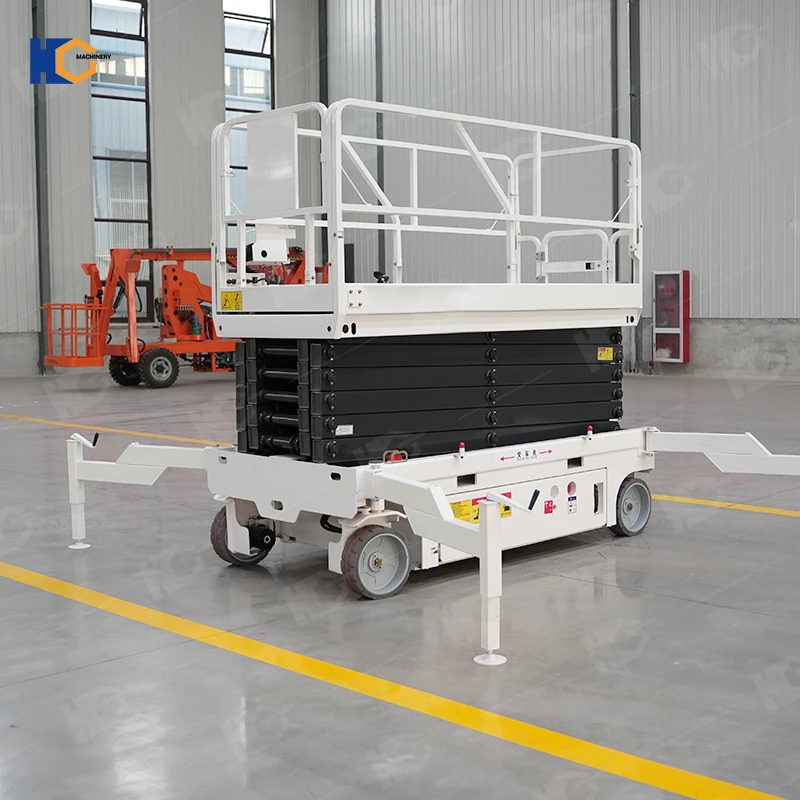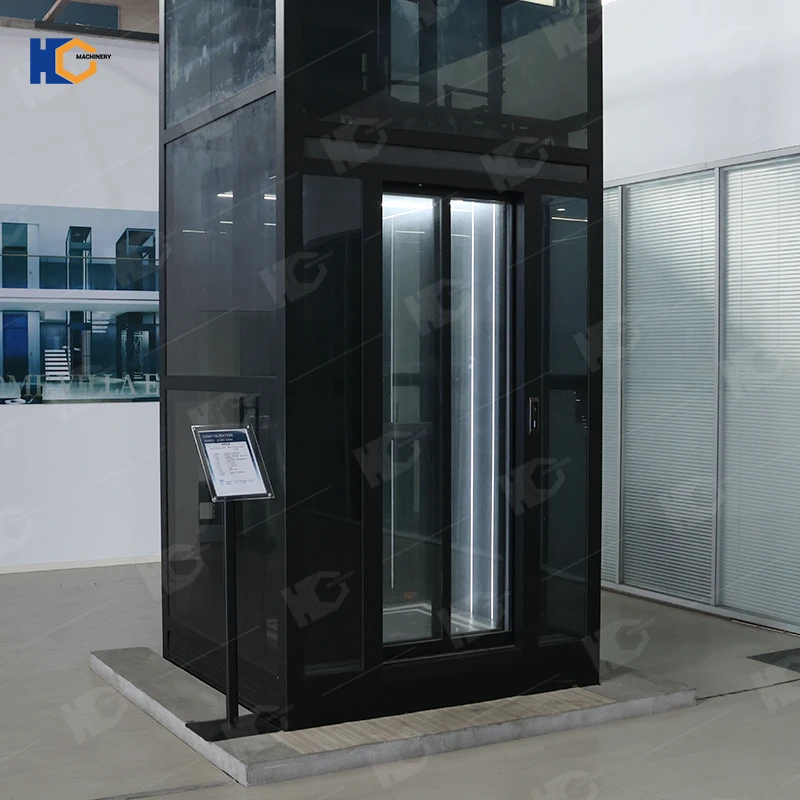For businesses, contractors, or individuals seeking to invest in AWPs, understanding these differences is critical to selecting the right equipment for the job.
This article dives deep into the technical specifications, pros and cons, selection criteria, and procurement advice for both types, helping you make an informed decision based on your unique needs.
What Are Articulating and Straight Boom Lifts?
Articulating Boom Lift
An articulating boom lift features a multi-section, jointed arm (typically 2–3 segments) that can pivot and rotate independently. This design allows the platform to extend horizontally, vertically, or at an angle, reaching over obstacles like buildings, trees, or power lines. The articulating mechanism mimics a human arm, enabling precise, multi-directional movement.
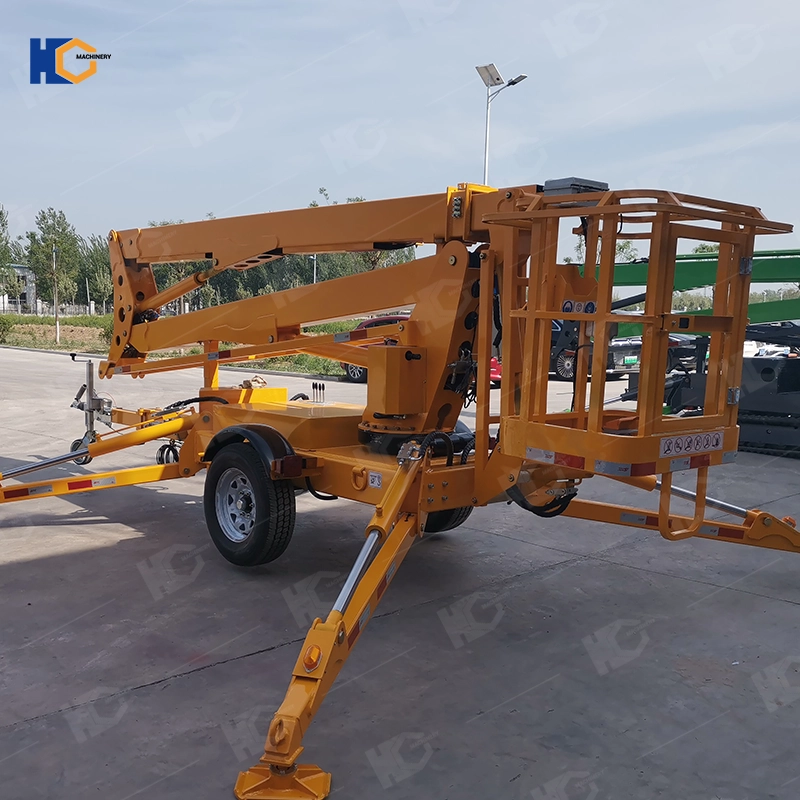
Straight Boom Lift
A straight boom lift, also called a “telescopic boom lift,” has a single, rigid telescoping arm that extends vertically (and sometimes slightly horizontally) without articulation. The arm moves in a straight line, making it ideal for tasks requiring straightforward vertical elevation, such as lifting workers to rooftops or loading docks.
Key Technical Specifications Comparison
To compare the two, we’ll focus on critical parameters that define their performance, safety, and versatility:
| Parameter | Articulating Boom Lift | Straight Boom Lift |
|---|---|---|
| Max Working Height | 15–60 meters (50–200 ft) | 10–40 meters (33–131 ft) |
| Horizontal Reach | Up to 18 meters (60 ft) from the base (due to articulation). | Limited to 0–5 meters (0–16 ft) (no lateral movement). |
| Platform Size | 1.2m x 1.2m (4ft x 4ft) standard; larger models up to 2m x 2m. | 1m x 1m (3.3ft x 3.3ft) standard; larger models up to 1.5m x 1.5m. |
| Load Capacity | 200–500 kg (440–1,100 lbs) | 200–600 kg (440–1,320 lbs) |
| Rotation Angle | 360° continuous rotation (boom articulates ±90° from vertical). | 0° (vertical only) or ±10° (limited tilt on some models). |
| Power Source | Electric (220V/380V) or diesel (for outdoor use). | Electric (220V/380V) or diesel (common for industrial sites). |
| Mobility | Self-propelled (with wheels) or stationary (mounted on trucks/trailers). | Self-propelled (wheeled) or stationary (truck-mounted). |
| Obstacle Clearance | Excellent (booms can lift over trees, fences, or roofs). | Poor (requires clear vertical path; cannot lift over obstacles). |
| Complexity | High (multi-jointed arms require precision controls). | Low (simple telescoping mechanism). |
Pros and Cons: Articulating vs. Straight Boom Lifts
Articulating Boom Lifts
Pros:
Versatility: Can reach over obstacles, work around corners, and access hard-to-reach areas (e.g., tree trimming, window washing on multi-story buildings).
Precision: Articulated booms allow operators to position the platform with pinpoint accuracy, reducing repositioning time.
Multi-Tasking: Suitable for diverse applications, from construction to utilities to agriculture (e.g., harvesting fruit from tall trees).
Stability: Many models feature outriggers or stabilizers to prevent tipping, even at maximum reach.
Cons:
Cost: Higher upfront cost (due to complex articulation mechanisms and advanced controls).
Maintenance: More components (joints, motors, sensors) mean higher maintenance costs and longer repair times.
Training: Operators need specialized training to master articulation controls, increasing labor costs.
Size: Larger footprint (due to stabilizers) may limit use in tight spaces.
Straight Boom Lifts
Pros:
Simplicity: Fewer moving parts reduce breakdowns and simplify maintenance.
Affordability: Lower initial cost (no articulation mechanisms) and cheaper repairs.
Ease of Use: Intuitive controls (often just a joystick) make them easy to operate with minimal training.
Compactness: Smaller footprint (no outriggers needed in many cases) fits better in confined spaces.
Cons:
Limited Reach: Cannot lift over obstacles, restricting use in cluttered environments (e.g., urban construction sites with power lines).
Vertical-Only: Requires a clear vertical path, making them unsuitable for angled or horizontal tasks.
Lower Load Capacity: Heavier loads may cause arm deflection (bending) at maximum height.
How to Choose Between Articulating and Straight Boom Lifts?
Selecting the right AWP depends on your application, budget, and operational environment. Use this decision flowchart to guide your choice:
1. What is your primary task?
Multi-directional access (e.g., tree trimming, roof repairs, window washing): Articulating lift.
Vertical transport (e.g., warehouse loading, construction site material hoisting): Straight lift.
2. What is the working environment?
Obstacles present (trees, fences, buildings): Articulating lift (needs to lift over or around obstacles).
Clear vertical space (warehouses, open lots): Straight lift (no need for lateral movement).
3. What is your budget?
Tight budget: Straight lift (lower upfront and maintenance costs).
Willing to invest for versatility: Articulating lift (justified if multi-tasking is required).
4. What is the maximum height needed?
Under 15 meters (50 ft): Both types work, but straight lifts are cheaper.
Over 15 meters (50 ft): Articulating lifts are more stable at greater heights due to multi-segmented arms.
Procurement Advice: 10 Tips for Buying Articulating or Straight Boom Lifts
Whether you choose articulating or straight, here’s how to ensure you get the best value:
1. Define Your Requirements Clearly
List your tasks (e.g., “lift workers to 18m to clean building exteriors”), height, load capacity, and environment (indoor/outdoor). This will narrow down your options.
2. Prioritize Safety Certifications
Look for models with CE, ISO 13485, or OSHA-compliant certifications. Check for features like anti-tip stabilizers, emergency stop buttons, and overload protection.
3. Compare Brands and Warranties
Reputable brands (e.g., JLG, Genie, Haulotte for articulating; Terex, Skyjack for straight) offer better reliability and after-sales support. Aim for a 2–3-year warranty on the boom and 1 year on electronics.
4. Test Before Buying
Request a demo to test:
Smoothness of operation: Articulating lifts should pivot without jerking; straight lifts should extend/retract smoothly.
Stability: At maximum height, does the platform wobble? (Articulating lifts with outriggers are more stable.)
Ergonomics: Controls should be intuitive (e.g., joystick for straight lifts; multiple joysticks for articulating).
5. Consider Power Source
Indoor use: Electric models (220V/380V) are quieter and emit no fumes.
Outdoor use: Diesel-powered models (with low emissions) are better for remote sites.
6. Negotiate Customization
Many suppliers offer customizations:
Platform size: Add non-slip mats or tool trays for specific tasks.
Accessories: Install guardrails, lights, or cameras for safety or visibility.
7. Check Maintenance Costs
Ask for a maintenance schedule and replacement part prices. Articulating lifts have higher maintenance costs (e.g., 500–1,000/year vs. 300–600/year for straight lifts).
8. Bulk Purchase Discounts
If buying 5+ units, negotiate volume discounts (10–20% off list price).
9. Logistics and Installation
Delivery: Ensure the supplier includes shipping (FOB or CIF terms).
Installation: Straight lifts are easier to install (no complex setup); articulating lifts may require professional alignment.
10. After-Sales Support
Choose suppliers with 24/7 technical support and local service centers to minimize downtime.
Final Thoughts: Match the Tool to the Task
Articulating and straight boom lifts serve distinct purposes. Articulating lifts are the “Swiss Army knives” of AWPs, ideal for complex, multi-angle tasks but costing more to own and maintain. Straight lifts are the “workhorses” of vertical transport, offering simplicity and affordability for straightforward jobs.
By aligning your choice with your specific needs—whether it’s accessing overgrown trees, hoisting materials, or navigating tight spaces—you’ll maximize efficiency, safety, and return on investment.
Ready to invest? Start by defining your tasks, budget, and environment, then explore trusted brands like Huichuang lift, JLG or Genie for articulating lifts, or Terex/Skyjack for straight lifts. With the right equipment, you’ll turn challenging jobs into manageable ones.
